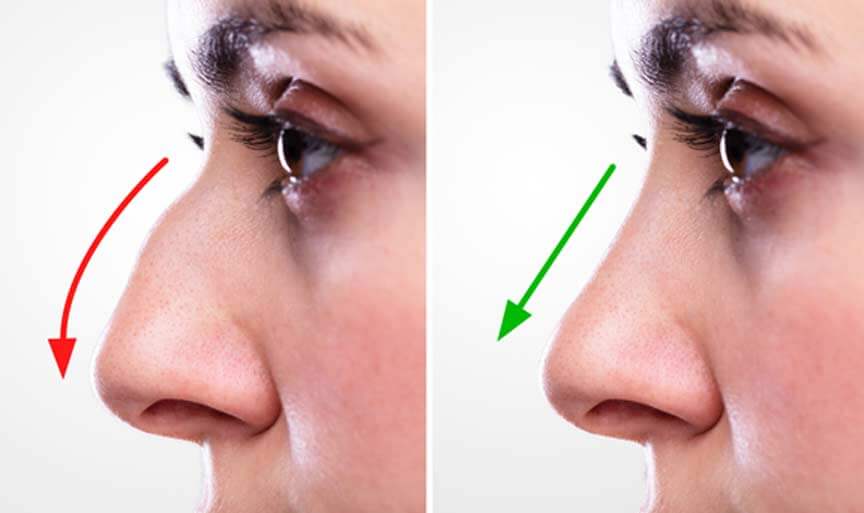Septorhinoplasty is a surgical procedure that combines two operations in one: the correction of the nasal septum (septoplasty) and the reshaping of the nose (rhinoplasty). This procedure is commonly performed to address both functional and cosmetic concerns, making it a popular choice for individuals seeking to improve their breathing while also enhancing their nose’s appearance.
In this blog post, we will explore the details of septorhinoplasty, its benefits, what to expect during the procedure, and the recovery process.
What is Septorhinoplasty?
Septorhinoplasty is a surgical procedure that addresses two key areas of the nose:
- Septoplasty: This corrects a deviated septum, which is the wall of bone and cartilage separating the two nasal passages. A deviated septum can lead to breathing difficulties, frequent sinus infections, and nasal congestion. Septoplasty straightens the septum, improving airflow through the nasal passages.
- Rhinoplasty: This reshapes the external structure of the nose. Rhinoplasty can alter the size, shape, or proportion of the nose, often performed for cosmetic reasons but sometimes to address structural deformities caused by injury or congenital conditions.
By combining these two procedures, septorhinoplasty offers both functional and aesthetic benefits.
Who is a Good Candidate for Septorhinoplasty?
Septorhinoplasty is recommended for individuals experiencing one or both of the following issues:
- Difficulty breathing due to a deviated septum.
- Desire for cosmetic improvements, such as refining the nasal shape, reducing the size of the nose, or correcting asymmetry.
- Nasal trauma or injury that has affected both function and appearance.
- Congenital nasal deformities causing breathing difficulties or cosmetic concerns.
It’s essential for patients to be in good general health, have realistic expectations, and discuss their goals with a qualified surgeon.
The Septorhinoplasty Procedure
The septorhinoplasty surgery typically takes between two to four hours, depending on the complexity of the case. Here’s an overview of the procedure:
- Anesthesia: Septorhinoplasty is usually performed under general anesthesia to ensure the patient is comfortable and pain-free during the surgery.
- Incision: The surgeon may use either a closed technique (where incisions are made inside the nostrils) or an open technique (where a small incision is made across the columella, the tissue separating the nostrils). The choice of technique depends on the complexity of the surgery.
- Septoplasty: The surgeon straightens the septum, removing or reshaping any obstructive parts that cause breathing difficulties.
- Rhinoplasty: The surgeon reshapes the external structure of the nose, refining its appearance according to the patient’s desired outcome.
- Closure: Once the corrections are made, the surgeon closes the incisions, often placing splints inside the nose to support the septum during healing.
What to Expect After Septorhinoplasty
Recovery from septorhinoplasty requires patience, as it takes time for both the internal and external tissues to heal. Here’s what patients can expect during the recovery phase:
- Swelling and bruising: The nose and surrounding areas will be swollen and bruised, especially in the first week. Most visible swelling subsides within two weeks, but subtle swelling may persist for several months.
- Breathing difficulties: Nasal congestion is common in the initial stages due to swelling and the presence of splints. Breathing typically improves significantly as the healing progresses.
- Pain management: Pain is generally mild to moderate and can be managed with prescribed pain medication.
- Follow-up appointments: Regular follow-up visits with the surgeon are essential to monitor healing and remove splints or stitches.
Most patients can return to light activities within two weeks, but it’s important to avoid strenuous activities, such as heavy lifting or exercise, for at least six weeks.
Benefits of Septorhinoplasty
The benefits of combining septoplasty and rhinoplasty into one procedure include:
- Improved breathing: By correcting the deviated septum, patients often experience significant relief from nasal obstruction, making breathing easier.
- Enhanced appearance: Rhinoplasty enhances the shape and proportion of the nose, boosting self-confidence and facial harmony.
- One surgery, one recovery: Instead of undergoing two separate surgeries for septoplasty and rhinoplasty, septorhinoplasty allows patients to address both functional and cosmetic concerns in a single operation, with one recovery period.
Risks and Considerations
As with any surgery, septorhinoplasty comes with potential risks, including:
- Infection
- Bleeding
- Adverse reactions to anesthesia
- Scarring (especially with the open rhinoplasty technique)
- Unsatisfactory cosmetic results or need for revision surgery
- Nasal obstruction due to scar tissue or incomplete correction of the septum
Choosing a skilled and experienced surgeon can help minimize these risks and ensure optimal results.
Finding the Right Surgeon for Septorhinoplasty
Choosing the right surgeon is crucial for achieving the desired outcome. When searching for a surgeon, consider the following:
- Experience and qualifications: Ensure the surgeon specializes in both rhinoplasty and septoplasty, with a proven track record of successful outcomes.
- Patient reviews and before-and-after photos: Reviewing previous patients’ experiences and results can give you insight into the surgeon’s work.
- Consultation: A thorough consultation allows the surgeon to assess your needs, discuss your goals, and create a personalized surgical plan.
Conclusion
Septorhinoplasty is a highly effective procedure for individuals seeking to improve both their breathing and the appearance of their nose. By combining septoplasty and rhinoplasty into one surgery, patients can experience significant functional improvements and aesthetic enhancements, all with a single recovery period. If you are considering septorhinoplasty, it’s essential to consult with a qualified surgeon who can help you achieve the best possible outcome.



